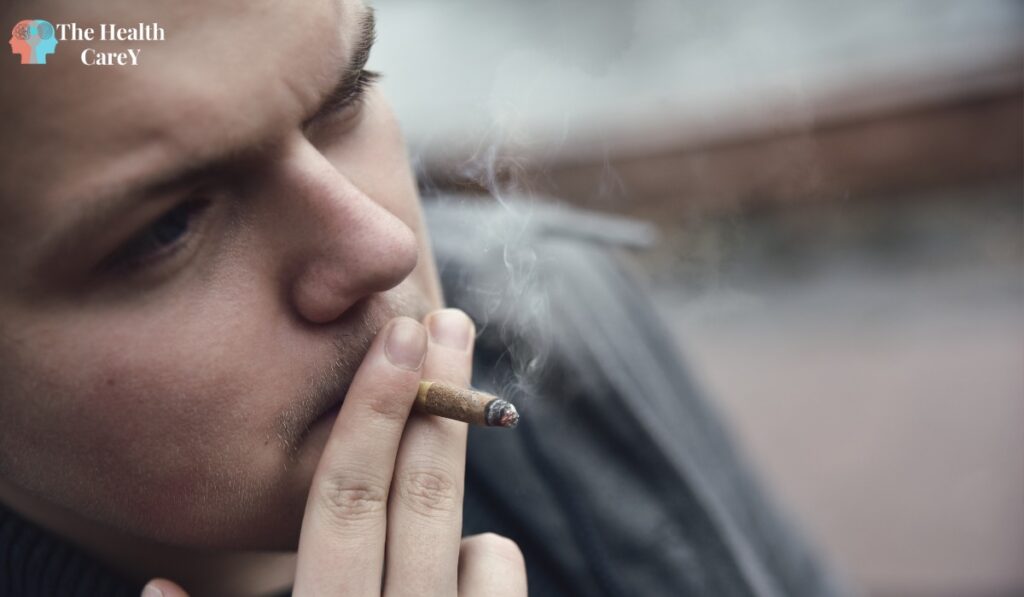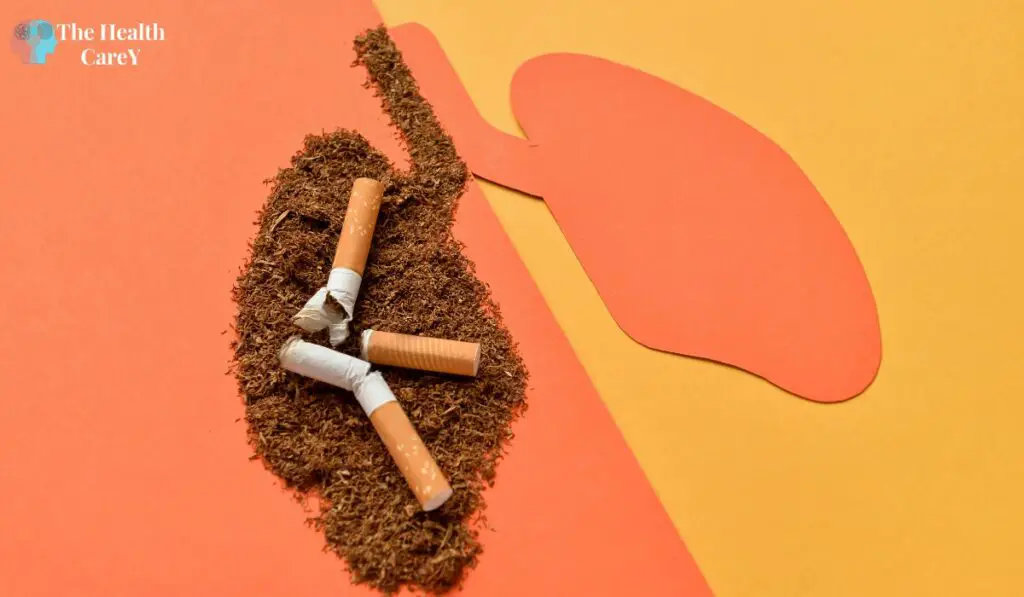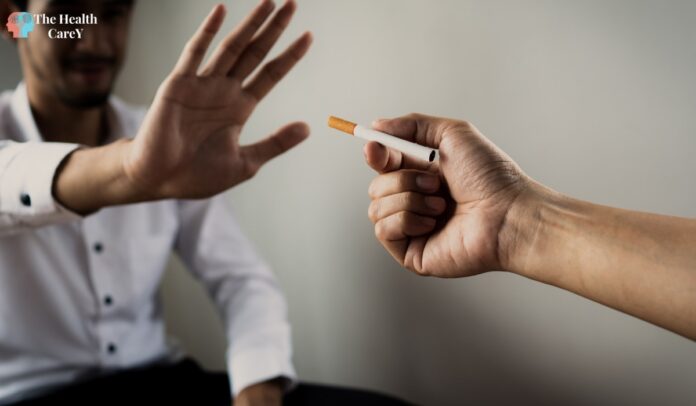If you’re a smoker, you may have heard of the term “smoker’s face.” It refers to the premature aging and damage smoking can cause to your skin and some say Smokers Face Before and After Quitting. Smoking can affect your skin in many ways, from causing wrinkles and fine lines to making your skin appear dull and lifeless.
Fortunately, quitting smoking can help reverse some of these effects and improve your skin’s health and appearance.
One of the most significant benefits of quitting smoking is improving your skin’s appearance. Studies have shown that your skin will look brighter and more youthful within a few weeks of quitting smoking. Smoking causes the skin to lose elasticity, leading to wrinkles and fine lines. Additionally, smoking can cause your skin to become dry and dehydrated, making it look dull and lifeless.
If you’re a smoker and concerned about the effects of smoking on your skin, quitting smoking is the best thing you can do.You can see the difference in Smokers Face Before and After Quitting. Not only will it improve your skin’s appearance, but it will also improve your overall health and reduce your risk of developing severe health problems. So, if you want to look and feel your best, it’s time to quit smoking and take care of your skin.
The Impact of Smoking on Skin and Appearance
Smoking is not only detrimental to your health but also has a significant impact on your skin’s health and appearance. Here are some ways smoking affects your skin:
Skin Damage and Premature Aging
Smoking reduces the amount of oxygen reaching your skin, leading to premature aging, fine lines, and wrinkles. Nicotine in cigarettes constricts blood vessels, reducing blood flow and oxygen to your skin. This lack of oxygen and nutrients can cause your skin to appear dull, dry, and lifeless.
Smoking also damages collagen and elastin, essential proteins that give skin elasticity and firmness. The more you smoke, the more collagen and elastin you lose, resulting in sagging skin, wrinkles, and fine lines.
Stained Fingers and Discoloration
Smoking can also cause your fingers to become stained with nicotine and tar, which can be challenging to remove. Additionally, smoking can cause uneven skin tone, age spots, hyperpigmentation, dark spots, and redness. These skin discolorations are caused by the toxins in cigarette smoke, which damage your skin cells and cause inflammation.
Facial Wrinkles and Sagging Skin
Smoking can cause facial wrinkles and sagging skin, particularly around the mouth and eyes. The repeated motion of smoking can cause wrinkles around the lips, while the loss of collagen and elastin can cause sagging skin around the eyes.
To prevent or reverse the effects of smoking on your skin, you should quit smoking as soon as possible. Quitting smoking can help your skin regain its elasticity, reduce the appearance of wrinkles, and improve your skin’s overall health and appearance. You can easily see difference between Smokers Face Before and After Quitting.
In conclusion, smoking significantly impacts your skin’s health and appearance. It can cause skin damage, premature aging, stained fingers, discoloration, facial wrinkles, and sagging skin. Quitting smoking is the best way to improve your skin’s health and appearance.

Health Risks Associated with Smoking
Smoking is a significant cause of preventable deaths worldwide. It affects your lungs and damages other organs in your body. Here are some of the health risks associated with smoking:
Lung and Other Cancers
Smoking is the leading cause of lung cancer. It is responsible for up to 85% of all lung cancer cases. Smoking also increases the risk of other types of cancer, such as bladder, liver, kidney, and pancreatic cancer. Squamous cell carcinoma, a variety of skin cancer, is also linked to smoking.
Cardiovascular Diseases
Smoking damages your heart and blood vessels, increasing the risk of cardiovascular diseases such as heart attack, stroke, and peripheral artery disease. Smoking also increases the risk of atherosclerosis, where plaque builds up in the arteries, restricting blood flow and increasing the risk of heart attack and stroke.
Gum Disease and Other Oral Health Issues
Smoking is a major cause of gum disease, which can lead to tooth loss. Smoking also increases the risk of other oral health issues such as oral cancer, bad breath, and stained teeth. Additionally, smoking can also affect your sense of taste and smell.
In addition to the above health risks, smoking can lead to other health issues such as chronic obstructive pulmonary disease (COPD), respiratory infections, and reduced fertility in both men and women.
It is important to note that quitting smoking can significantly reduce the risk of developing these health issues. The sooner you quit smoking, the sooner your body can start to heal and repair the damage caused by smoking.
Quitting Smoking: The Immediate and Long-Term Benefits
If you’re a smoker, quitting is one of the best things you can do for your health. Not only will you experience immediate benefits, but you’ll also reduce your risk of developing serious health problems in the long term.
Improvements in Skin Health and Appearance
Quitting smoking can have a significant impact on your skin health and appearance. Smoking can cause premature aging, wrinkles, and a dull complexion. When you quit smoking, your skin will begin to heal and look healthier and you can see significant change in Smokers Face Before and After Quitting. Your circulation will improve, so more oxygen and nutrients will reach your skin cells, giving you a brighter, more youthful complexion.
Reduced Risk of Disease
Quitting smoking can also significantly reduce your risk of developing severe health problems. Smoking is a leading cause of heart disease, lung cancer, and other types of cancer. When you quit smoking, your risk of these diseases decreases, and your overall health improves. Your blood pressure and heart rate will also decrease, reducing your heart attack and stroke risk.
Enhanced Physical Health
When you quit smoking, your lungs will begin to heal, and you’ll notice improvements in your breathing and overall lung function. You’ll also experience less shortness of breath and coughing. Your carbon monoxide levels will decrease, and your blood will be able to carry more oxygen, improving your circulation and overall physical health.
In conclusion, quitting smoking is one of the best things you can do for your health. Not only will you experience immediate benefits, but you’ll also reduce your risk of developing serious health problems in the long term. So, if you’re a smoker, consider quitting today and start experiencing the many benefits of being nicotine-free.

The Healing Process: What to Expect After Quitting Smoking
Quitting smoking is the best thing you can do for your health and your skin. Although the healing process may take some time, your body will start to repair itself almost immediately after you quit. Here’s what you can expect during the healing process.
Withdrawal Symptoms and Coping Strategies
You may experience withdrawal symptoms such as irritability, anxiety, and cravings when you quit smoking. These symptoms can be unpleasant but temporary and will go away over time. You can cope with these symptoms by:
- Staying active: Exercise can help reduce stress and anxiety.
- Drinking water: Staying hydrated can help reduce cravings.
- Talking to your healthcare provider: Your healthcare provider can provide resources and support to help you quit smoking.
Restoration of Damaged Skin
Smokers Face Before and After Quitting: Smoking can damage skin, including poor wound healing, scarring, and exposure to carbon monoxide. After you quit smoking, your skin will start to repair itself. Here’s what you can expect:
- Within 2-3 days: Your skin color will start to return, and your overall tone will improve.
- Within 1 week: Your skin will appear more vibrant due to increased oxygen and antioxidant levels.
- Within 1 month: Your circulation will recover, restoring nutrients and oxygen to the skin.
It’s important to note that while your skin will start to heal after you quit smoking, it may take some time for the damage to disappear completely. Talk to your healthcare provider about treatment options if you have scars or other skin damage from smoking.
In conclusion, quitting smoking is the best thing you can do for your health and your skin. Although the healing process may take some time, your body will start to repair itself almost immediately after you quit. Remember to stay active, drink water, and talk to your healthcare provider for support during withdrawal. And be patient with your skin – it will take time to heal, but it will be worth it.
Lifestyle Changes to Boost Skin Health Post-Quitting
If you want to improve your skin health after quitting smoking, you can make lifestyle changes to support your skin’s recovery. Here are some tips to help you get started:
Diet and Nutrition
A balanced diet rich in nutrients like vitamins C and E can help promote healthy skin. These vitamins are potent antioxidants that protect your skin from damage caused by free radicals. Staying hydrated is also essential by drinking plenty of water throughout the day. Avoid consuming too much alcohol, which can dehydrate your skin and make it look dull.
Exercise and Physical Activity
Regular exercise can help improve blood flow and circulation, supporting healthy skin. Aim to get at least 30 minutes of moderate exercise most days of the week. This could include activities like brisk walking, cycling, or swimming.
Sleep and Stress Management
Getting enough sleep is essential for healthy skin. Aim for 7-9 hours of sleep each night. Stress can also take a toll on your skin, so finding ways to manage stress levels is crucial. This could include activities like meditation, yoga, or deep breathing exercises.
By making these lifestyle changes, you can support your skin’s recovery after quitting smoking. Remember, it can take time for your skin to recover fully, so be patient and consistent with your efforts.
Skin Care and Cosmetic Procedures for Ex-Smokers
As an ex-smoker, you may have noticed that your skin has aged prematurely and has developed wrinkles, sagging, and droopy skin. Fortunately, several skincare and cosmetic procedures are available to help you reverse the damage caused by smoking. But Smokers Face Before and After Quitting is quite different.
Sun Protection and Antioxidants
To safeguard your skin, protecting it from the sun’s harmful UV rays is paramount. Moreover, it is essential to avoid smoking, as it diminishes the oxygen supply to the skin, leading to heightened inflammation, delayed healing, and an elevated risk of skin cancer. It is essential to use broad-spectrum sunscreen with an SPF of at least 30 daily, even when it’s cloudy outside.
In addition to sunscreen, you should also incorporate antioxidants into your skincare routine. Antioxidants help to neutralize free radicals that can damage skin cells and accelerate aging. Look for skincare products containing vitamins C, E, and green tea.
Dermal Fillers and Other Treatments
Dermal fillers are a popular cosmetic treatment that can help restore face volume and contour. As a smoker, you may have lost volume in your cheeks, lips, and under-eye area. Dermal fillers can help to restore this lost volume and give you a more youthful appearance.
Other cosmetic procedures that may benefit ex-smokers include chemical peels, microdermabrasion, and laser treatments. These treatments can help to improve skin texture, reduce the appearance of fine lines and wrinkles, and improve overall skin tone and radiance.
It’s essential to consult with a dermatologist or cosmetic surgeon to determine which treatments are best for you. They can assess your skin and recommend a customized treatment plan to help you achieve your desired results. By incorporating sun protection, antioxidants, and cosmetic treatments into your skincare routine, you can help to reverse the damage caused by smoking and achieve a more youthful, radiant appearance.
Frequently Asked Questions
How long does it take for your skin to improve after quitting smoking?
Ans: It can take up to a year for your skin to fully recover after quitting smoking. However, improvements can be seen within a few days of quitting, such as increased hydration and a brighter complexion.
What are the benefits of quitting smoking for your skin?
Ans: Quitting smoking can benefit your skin, including improved texture, tone, and elasticity. It can also reduce the appearance of fine lines, wrinkles, and age spots. Additionally, quitting smoking can improve blood flow to your skin, leading to a healthier, more youthful appearance.
Can quitting smoking improve the appearance of wrinkles?
Ans: Yes, quitting smoking can improve the appearance of wrinkles. Smoking can cause premature aging of the skin, leading to the development of wrinkles. When you quit smoking, your skin can start to repair itself and regain some of its elasticity, which can reduce the appearance of wrinkles.
Does smoking cause premature aging of the skin?
Ans: Yes, smoking can cause premature aging of the skin. Smoking can damage collagen and elastin, essential proteins that help keep your skin looking young and healthy. Smoking can also reduce blood flow to your skin, which can cause it to look dull and lifeless.
What are some natural ways to improve skin after quitting smoking?
Ans: Some natural ways to improve your skin after quitting smoking include staying hydrated, eating a healthy diet rich in vitamins and antioxidants, and exercising regularly. You can also use skincare products that contain retinoids, which can help improve the texture and tone of your skin.
How does smoking affect the texture and tone of your skin?
Ans: Smoking can cause your skin to become dry, dull, and uneven in texture and tone. Smoking can also lead to fine lines, wrinkles, and age spots. Additionally, smoking can reduce blood flow to your skin, which can cause it to look pale and lifeless and you can see difference between Smokers Face Before and After Quitting.
Also Read:
What are Dosage and Administration of Adrol 50?
What is the best food to eat while taking Ozempic?





















